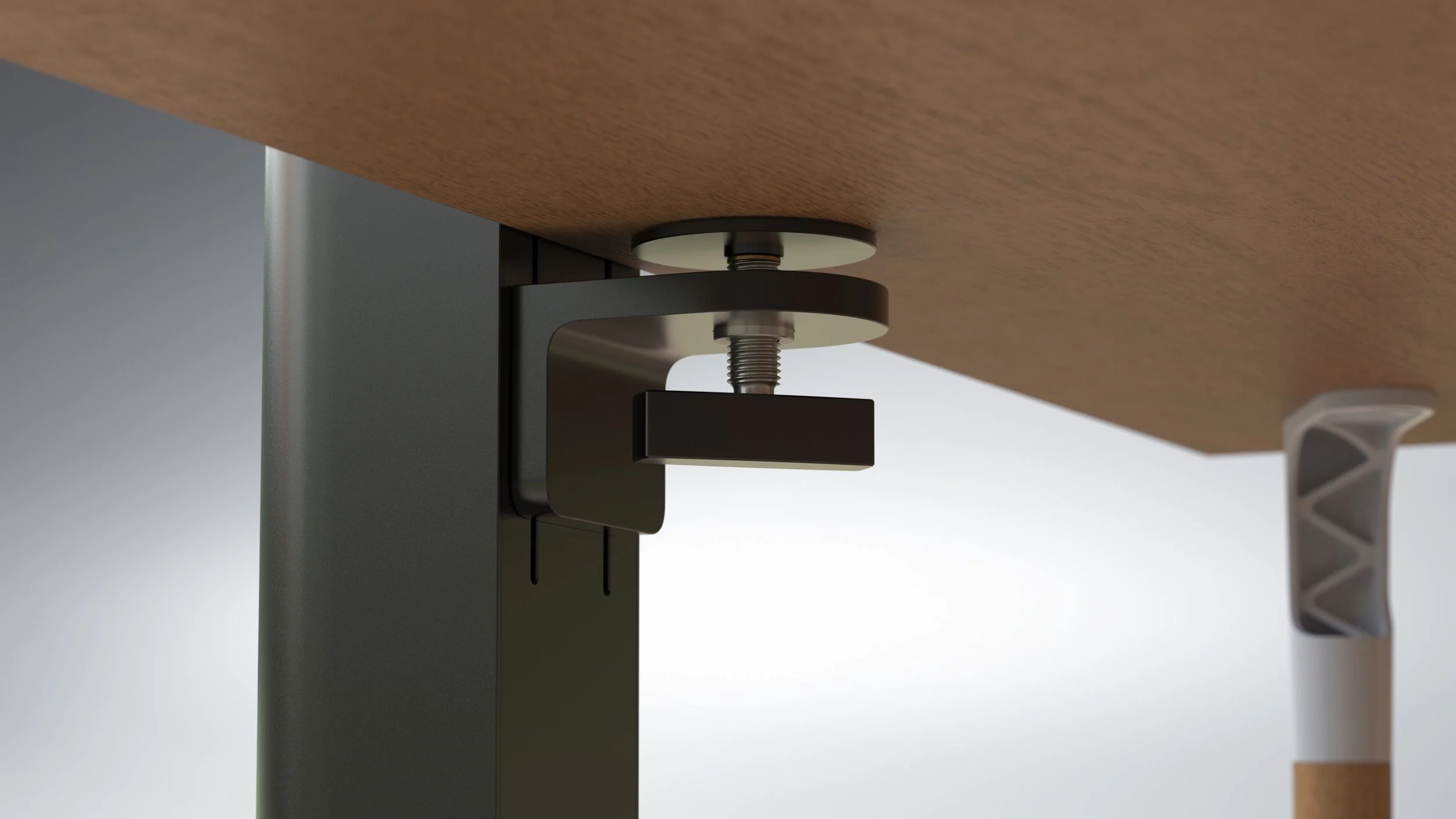AXIS
AXIS was a project at Samsung’s Think Tank Team. We developed a Robotic monitor arm and accompanying software aimed at delivering new experiences to the end user. The 4-axis arm could position a monitor up to 32” within a large working envelope. This would allow for improved ergonomics in multi-user workstation environments where a built-in camera could adjust the monitor position to match the stature of each user. It also enabled custom “workspaces” where a user could configure the arm to position the monitor in a specific location or orientation based on the task the user was performing.
I was responsible for leading the mechanical and industrial design of this project.
The design showcased in the renderings above and below was my design intent for the final prototype of the AXIS arm. This design would have dramatically improved upon the first prototype with more refined aesthetics and mechanics. The design of the linkages was changed significantly to eliminate sag and introduce a common actuator design at each joint. The desktop portion of the base was to feature a capacitive sparse display for user input and a single ultra wide-angle camera for user tracking and object avoidance. The desk clamp would be easily repositionable to accommodate different desks and the base of the tower housing would accommodate internal power supplies for the arm and monitor.
Prototyping
Throughout the project, I fabricated numerous proof-of-concept prototypes to validate the designs I was exploring. Pictured below are some of the initial prototypes I built to test the design for the final AXIS iteration including the improved linkage design. This design was a response to insufficient rigidity in the earlier prototypes and the desire for improved kinematic control.
First Prototype
This prototype was the predecessor to the above design. It was the first attempt to design and build a consumer-oriented design. Through initial research and experience prototyping on an earlier robot, the team determined that a 4-axis robot would be the best compromise between feasibility and user experience. These degrees of freedom were in-out, up-down, side-to-side tilt, and a 90° rotation of the monitor. We designed a telescoping tower with a linkage system and end effector that was able to achieve these degrees of freedom and provide a range of movement that would accommodate nearly all users. A camera in the base could track users and communicate with the control software of the robot to update its position. Additionally, the arm featured integrated HDMI and power passthrough to connect the monitor.
Experience Prototype
The first robot for the AXIS project I designed and built this prototype over the course of six weeks so that the team could demo an initial experience prototype to executives. It was subsequently used in further software and UI/UX development efforts.
Because of the accelerated timeline in which this initial prototype was delivered, it was designed purely for functionality. It achieved a greater range of motion than research indicated was necessary and had a 3x margin on payload weight capacity.


































